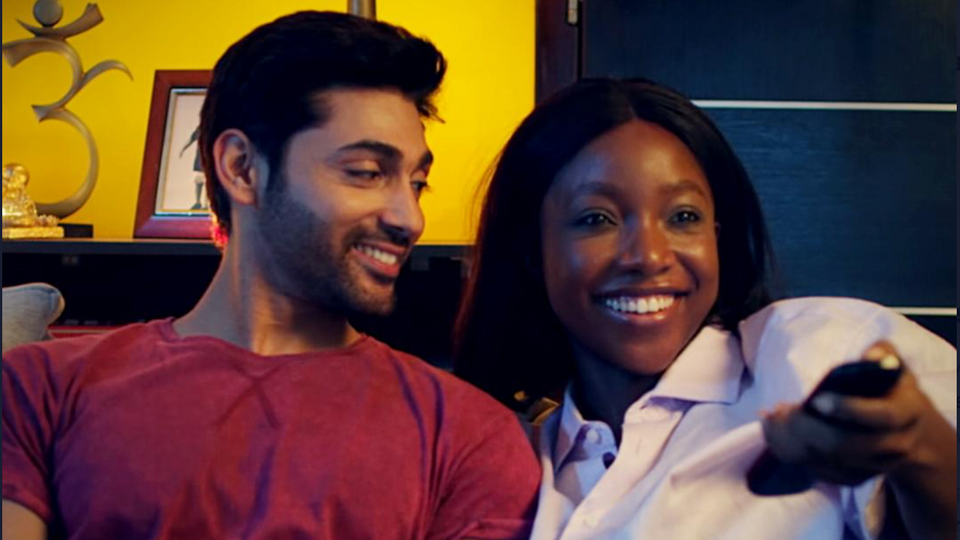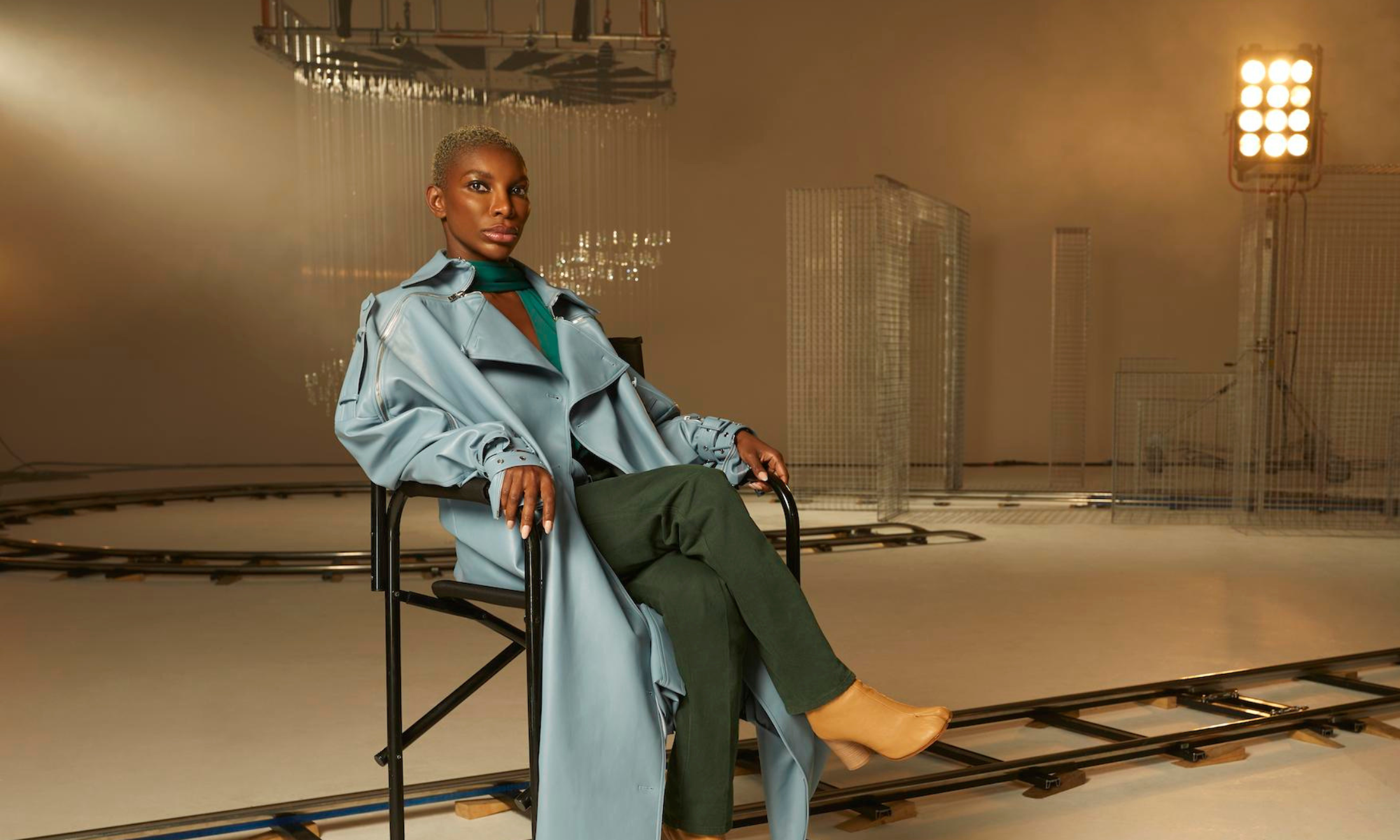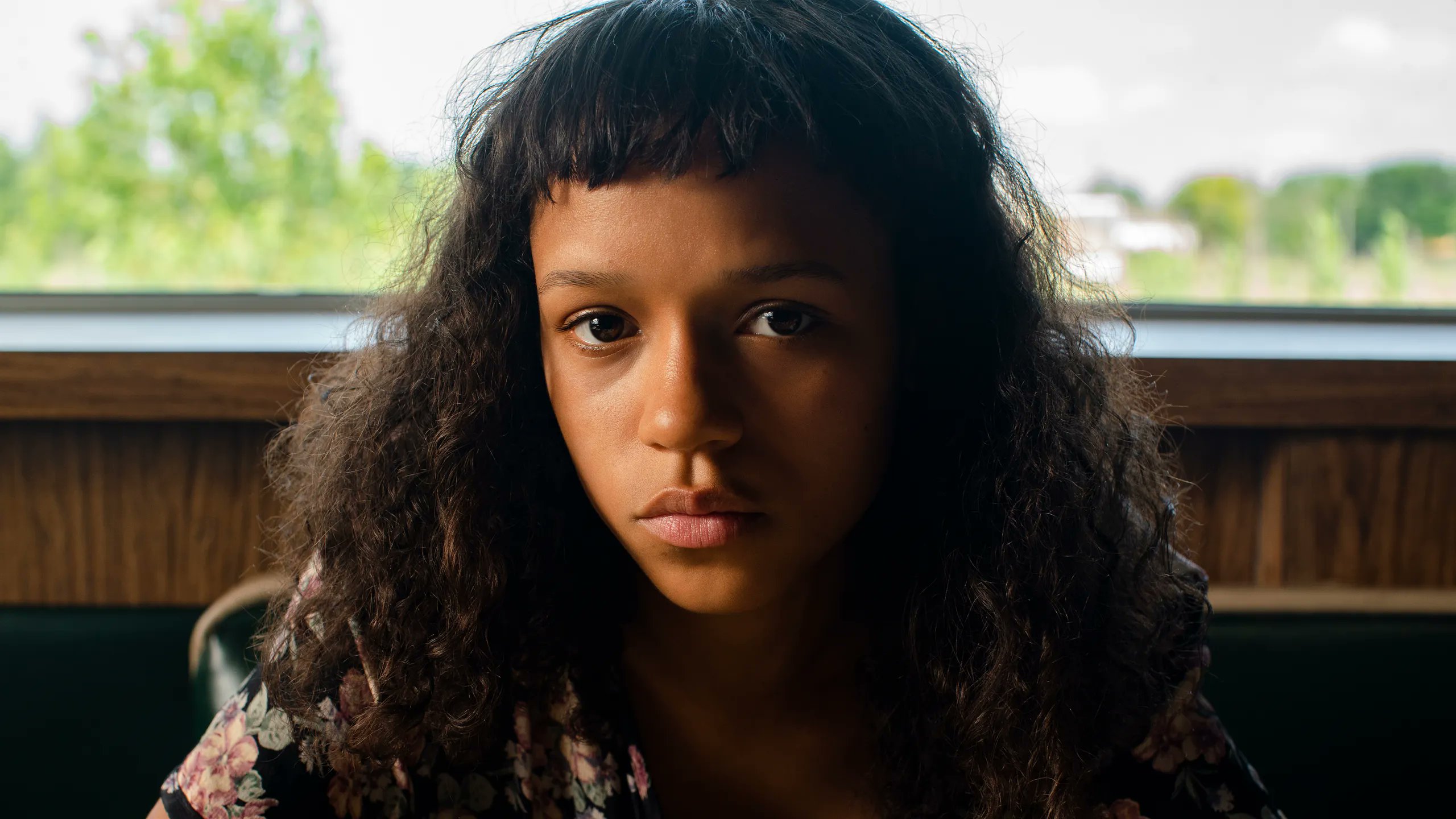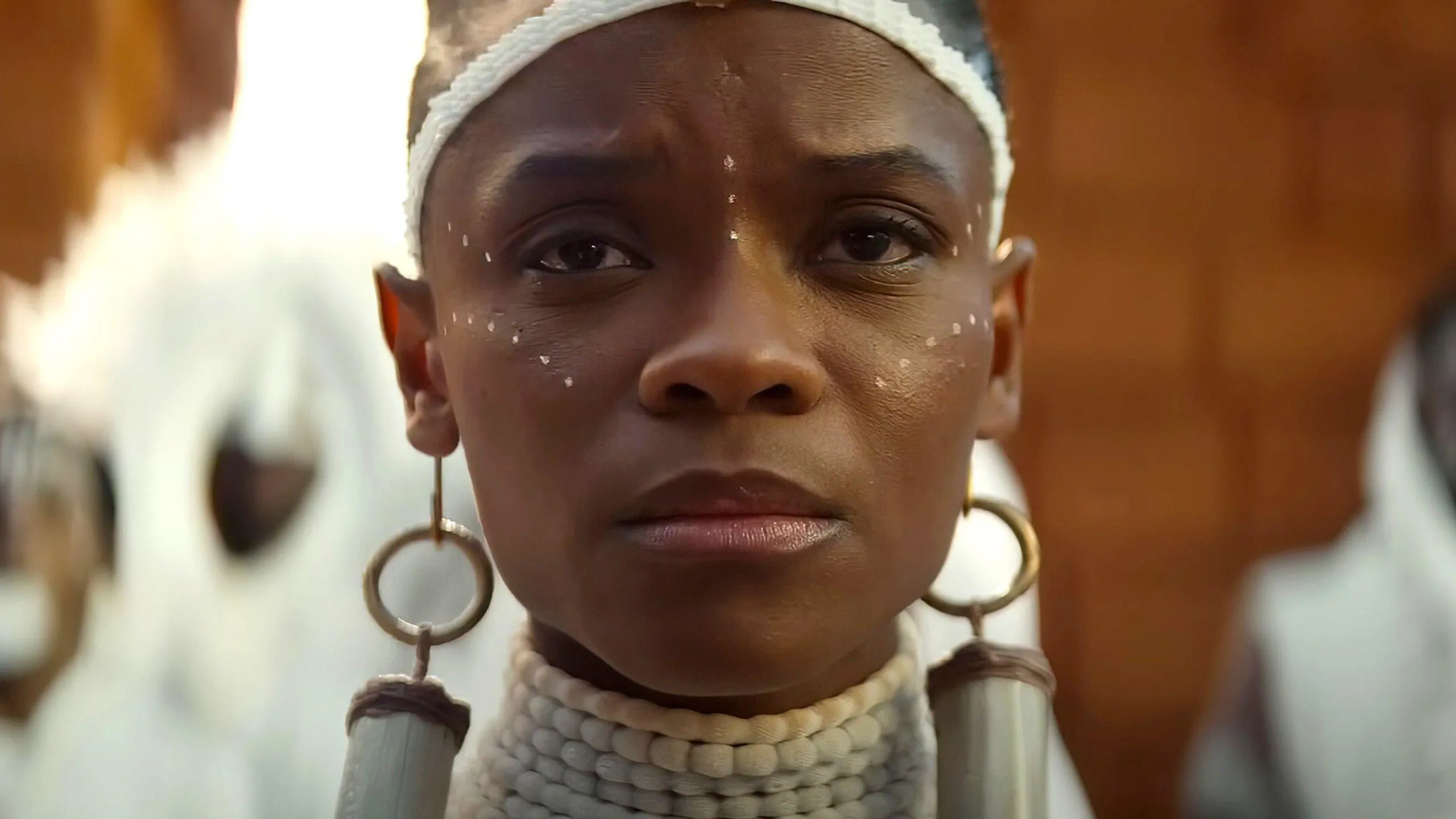
still via Netflix
Namaste Wahala, Netflix’s Bollywood-Nollywood crossover, somehow isn’t extra enough
The movie has neither the finesse of the musical numbers that are Bollywood’s crowning glory nor the dramatic story arcs of Nollywood.
Memuna Konteh
15 Feb 2021
Namaste Wahala made for cheery (if cheesy) V-day viewing. The Bollywood-Nollywood crossover, written and directed by Hamisha Daryani Ahuja, is a classic boy-meets-girl, fated love story. It’s complete with disapproving prospective in-laws and goofy yet supportive friends that are staple in both Nigerian and Indian romance films. Though relentless in its clichés, the wholesome world of the movie serves as a perfect distraction from the bleakest Valentines season ever, thanks to the pandemic.
This cross-cultural fusion is being heralded as a turning point in the alliance between Bollywood and Nollywood. The film has quickly risen to the number one spot in Netflix Nigeria’s top ten, a victory that was celebrated by Hamisha on Instagram. Before its release, she told Reuters she wanted to make something “more relatable”, like “a full-on Nollywood movie [with] some Indian actors to make it a little bit more fun”. She carried on to say that the film was inspired by 90s style Bollywood, “the singing and dancing around trees. We have all of that. It is a very cheesy, mushy, romantic drama”.
But, according to connoisseurs of African film, curator Keith Shiri and professor of African studies Mbye Cham, it would be misguided to position Namaste Wahala as a groundbreaking collaboration. Keith, who programmes festivals at the BFI and is the artistic director for the Africa International Film Festival is certainly far from impressed, calling the film “bizarre” and “childish”.
“It is not an example of anything, it’s such an embarrassing film for me… It doesn’t retain all the qualities that I really think about when I think of the possibility of this partnership,” he says, in response to the suggestion that the film sets precedent in bringing together Nigerian and Indian cinema.
“It doesn’t retain all the qualities that I really think about when I think of the possibility of this partnership”
The story of Namaste Wahala mainly focuses on the culture clash that prevents Indian Raj and his Nigerian bae Didi’s relationship from running smoothly. Elevating this slightly, is a subplot about gender-based violence, class disparity and institutional corruption, in which lawyer Didi goes head-to-head with her father to defend a client who was abused by one of his business partner’s sons – arguably my favourite thing about the movie. Equally commendable is the subversive nature of the casting. In centring dark skin actress Ini Dima-Okojie as the lead, Namaste Wahala defies colourist trends that exist globally but are especially prolific in Bollywood.
But the movie was indeed clumsy in parts. It lacked the finesse of the elaborate musical numbers that are Bollywood’s crowning glory, as well as the equally elaborate, dramatic story arcs common to Nollywood. Although set in Lagos, it also seemed linguistically confused and featured a lot more Hindi than native Nigerian languages.
“There’s no particular essence to it,” Keith criticises. “One day somebody is going to make a film that connects those countries… somebody is actually going to have a real dialogue about people and audiences from countries of the South coming together.” A charge for which, in his opinion, Namaste Wahala falls short.
Keith’s point is that despite the hype, this movie is not the best nor the first to showcase the complex relationship that has existed between Bollywood and Nollywood for decades. Mbye Cham, who works at Howard University’s College of Arts and Sciences, agrees and brings my attention to a similarly titled Nollywood film from 2018, Namaste, which follows a Nigerian conwoman who pretends to be Indian and scams people out of their naira with fake rupees. He added that Nigerians have long been “drawing motifs”, such as the comic con-artist, from Indian film.
Mbye goes on to say that the Indo-Nigerian cultural exchange is more obvious in Northern Nigerian cinema, otherwise known as Kannywood, which shares many “techniques, content and visual styles” with Bollywood, specifically around music and choreography.
As two of the wealthiest economies in the Global South, Nigeria is India’s largest African trading partner and Nigerian audiences have been enjoying Hindi-language film since the 1950s. Keith, who’s from Zimbabwe, and Mbye, who’s Gambian, both believe the majority of Africans in their generation grew up on Bollywood.
“Indians have always participated in one way or another in the educational systems of Africa,” Mbye says. He explains that his associate Abdoul Moussa, a former lecturer at The American University of Nigeria, told him that more recently there has even been an increased presence of Indian educators in Nigerian film schools. He also says that some of the more politically-minded Nigerian filmmakers have been known to evoke Indian legends like Satyajit Ray, Ritwik Ghatak and Mrinal Sen.
“Indians have always participated in one way or another in the educational systems of Africa”
Namaste Wahala, which literally translates as ‘Hello Trouble’, may not be comparable to the works of any of those filmmakers but it’s worth celebrating if only for the fact that it exposes mainstream audiences to the two film traditions and by consequence, the wider history of cultural interaction between the countries. If this kind of close collaboration is to continue it also spells a bright future for the funding and production quality of Nollywood film.
India and Nigeria may be first and second respectively biggest producers in terms of yearly film output (both release between 1,500 to 2,500 titles a year, with Bollywood being thought to hold the lead) but the industries have very different finance models. A lot of the emerging ‘high value’ Nollywood films, like The Wedding Party, rely on syndicate funding and have really tight budgets whereas Bollywood cinema is bolstered up by big corporate production houses which allow them to be glitzier and more refined. Neither model stands up to Hollywood or the British model, which includes government funding, but Mbye and Keith believe that a true financial cooperation across Indian and Nigerian cinema can only mean good things.
Keith thinks it could spell the end of a historic preoccupation to satisfy the Western media elite. This preoccupation has meant that the revered African films of the past, like the films of Ousmane Sembene, weren’t available to locals or missed the mark among them.
“Everything that you were looking at from Africa was given a different tone and you were never really there,” says Keith. “It’s the idea of African filmmakers trying to qualify for funding, always needing a European producer to declare whether it works and for which audience and then you’re always [pandering to] audiences in Cannes or Berlin or other platforms and [you] find it difficult to find an audience back home.”
Mbye adds: “It could be seen within the context of greater South-South cooperation which could end up in producing something phenomenal.”
For Netflix’s 50,000 domestic Nigerian users and two million Indian subscribers, as well as Nollywood and Bollywood fans in the diaspora, the positive implications are already being felt in the popular inclusion of our tastes. There may be plenty of disappointed viewers like Keith but regardless, Namaste Wahala represents an optimistic by-product of the Netflix era, making non-Western content accessible globally and freeing those of us in the diaspora from the confines of the minimal (and often expensive) ‘specialist ethnic’ add-on channels.









